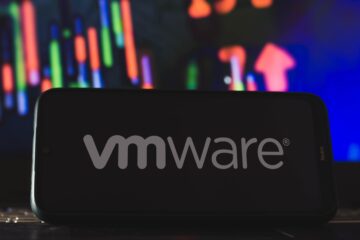When the Bloomberg Terminal was introduced in 1982, it changed Wall Street forever. The Terminal was a computing marvel, aggregating and correlating more data than ever imagined. From market data to global currencies, commodities and real estate to policy and politics, investors and traders had for the first time a centralized data platform for real-time, multidimensional visibility and analysis.
After seeing the field differently, users developed new proprietary strategies that led to an explosion in new products, such as index options and mortgage-backed securities. Data analysis kicked off an age of discovery, and it made Wall Street the place to be in the 1980s and beyond.
Today, data analysis is a critical component of any cybersecurity program. Security teams must sift through a dizzying array of inputs and issues in order to separate the signals and noise. They must differentiate between legitimate and malicious activity and prioritize where to take action to mitigate risk and battle adversaries to protect their businesses and customers.
One could argue that artificial intelligence (AI) and machine learning (ML) are leading the much-needed age of advancement in cybersecurity. But thousands of companies are using AI and ML to develop thousands of cybersecurity solutions. Siloed implementations by vendors that have little incentive to collaborate have created massive complexity that ultimately still leaves businesses vulnerable to attacks and exploits.
The Bloomberg Terminal for cybersecurity — the “single pane of glass” that gathers and correlates all the relevant information security professionals need to do their jobs efficiently — doesn’t yet exist. So enterprises are left grappling with where they should begin.
Protect the Most Critical Asset First
The approach we have been using to reduce business risk and protect critical assets is not working or scaling to meet the complexity of today’s environment or the attack landscape. The focus has been on protecting the infrastructure, the data center, and the devices using a complex web of barriers to limit access. Despite the attention that zero-trust security architectures have received, it seems that as an industry, we struggle to turn the rhetoric into architecture. Businesses are encouraged to move away from moats and castles and toward securing access and applications, but practitioners still tend to focus on building fences around their most critical assets instead of securing the assets themselves.
Yet data is arguably the enterprise’s most important asset. Data breaches exposed 21 billion records in 2021. This is why cybercriminals target it and governments around the world regulate it. The business consequences of a data breach have never been higher. According to the 2022 “Cost of a Data Breach” report from IBM and Ponemon, the average cost of a data breach rose to a record $4.35 million in 2022.
As the enterprise transitions to the cloud, this shift dramatically increases the threat surface of an organization, since much of this activity is outside the visibility of the security teams. “The cloud” no longer means a public cloud vendor or two. The modern enterprise environment involves on-prem services, multiple cloud services, software as a service (SaaS), infrastructure as a service (IaaS), and platform as a service (PaaS) all securing managed and unmanaged devices, with hybrid employees and third parties all requiring access to business assets. Security professionals have no way to see it all, certainly not in a dashboard view.
Protect the Whole Enterprise
Few organizations speak with more CISOs than Gartner. According to “Gartner Predicts 2022,” consolidated security platforms are the future:
Vendors are increasingly divided into ‘platform’ and ‘portfolio’ camps, with the former integrating tools to make a whole that’s greater than the sum of the parts, and the latter packaging products with little integration. Technology consolidation is not limited to one technology area or even to a closely related set of technologies; these consolidations are happening in parallel across many security areas.
The Bloomberg Terminal for cybersecurity may never exist in the way security professionals dream about, so it’ll be up to them to envision and create their own version. This is harder than it might seem, as evidenced by the increasing disillusionment security practitioners feel with their security information and management (SIEM) implementations — where big data leads to big bills but not deep insights — and the growth of more specialized event management and extended detection and response (XDR) solutions. This will require a review of that sea of options to select the tools that make the most sense for each layer of the enterprise.
Could we end up with a handful of platforms built on open standards? For the sake of enterprise risk, and the people doing the work, let’s hope so.













